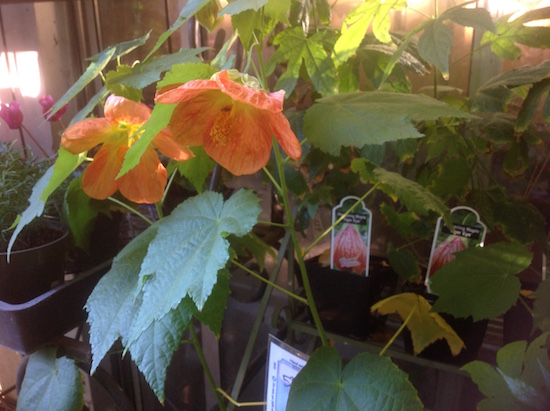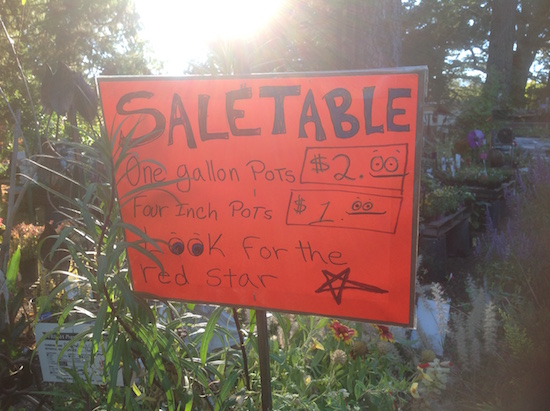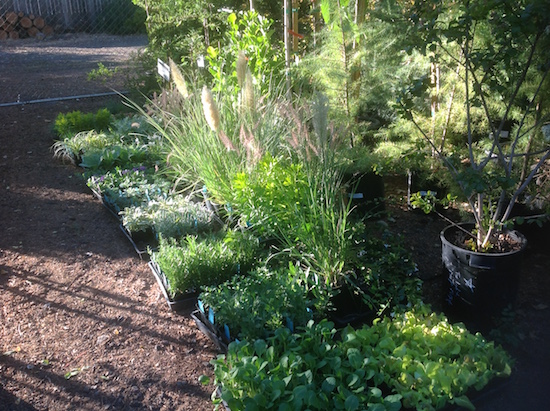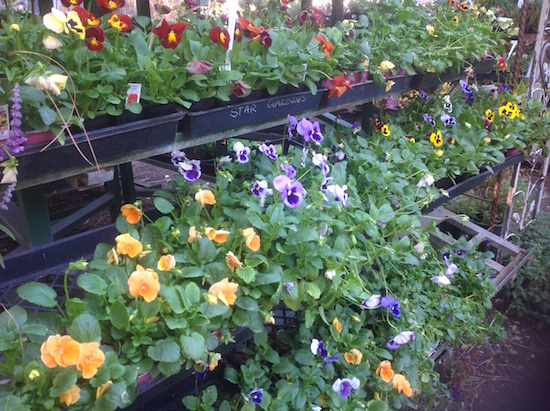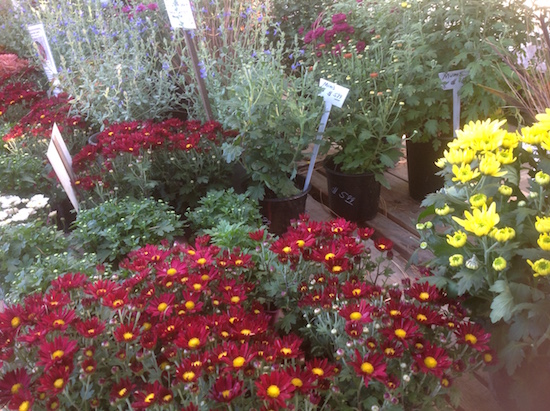Plant of the Month
Abutilon hybrids
Flowering Maple
Abutilons are evergreen shrubs native to South America and other warm regions of the world. We can grow them here with protection in the winter or as a potted plant brought indoors for winter. They sport maple like leaves and bell shaped flowers that come in many colors. A few are more vine like and look good on a trellis. The yellow and white flowering types tend to bloom the most but the reds, pinks and oranges tend to be more popular. Good drainage is essential and they need part shade here. They can grow quite large,up to 10 ft tall, but there are dwarf varieties available that do not get more than 2 ft. These members of the mallow family are definitely worth attempting to grow at your house. Try planting in a large pot on your covered deck. Cut back after the cold to shape.
Oct. Specials
- Abutilon 20% OFF
- Daylilies and Hostas 30% OFF
- Lilacs, Quince, Spireas 50% OFF while supply lasts
- E.B.Stone 0-10-10 Bloom Food 20% OFF
- Check out the bargain table
Customer Appreciation Day Sat. Oct 1
- All plants 20 to 50% OFF
- One day only!
Newsletter Oct 2016
October already, and I love this time of year. Although regrettably the days are getting shorter, the light quality is so warm and glowing, the days are a little cooler and we are entering prime planting time. Most of us in the nursery business in California think fall should be as busy as spring but we are not holding our breath waiting for that to happen.
I read an article lately about planting younger container grown trees versus older ones. I can not find it to brush up on what it said but I do remember it favored starting young. First off less chance of a permanent bonsai type situation happening with a tree that has spent many years growing in a container. Second you are getting your tree planted sooner in the spot where it is going to spend the rest of its life. Younger trees are usually more adaptable (just like people). Perhaps my favorite is you do not have to dig as big of a hole. You are also able to do any corrective pruning on the tree before it is too late. Alas sometimes you just want to get a bigger tree to start because you plan on selling, or you feel your time on earth is growing short or, as in the case for many here, your mature trees all burned up and the quicker you get some shade and green growing the better. Now is an excellent time to plant trees no matter if you choose younger or more mature.
What to plant now? Spring blooming bulbs like tulips and daffodils are available for fall planting. It is also a good time to plant potatoes, onions and garlic. Sweet peas are best planted in fall and although I lose a few over winter they are ready to perform as the weather warms and are more deeply rooted than those planted in spring. Seeds of sweet peas are available now and starter plants are also available. I do not think you can beat a bouquet of sweet peas when it comes to cut flowers. Trees, shrubs and hardy perennials do just fine planted now. For winter color try pansies, poppies, ornamental kales and cabbages, calendula, primroses and cyclamen. Deer resistant winter annuals that actually survive our cold and bloom are almost non exsistant. Some can grow cyclamen, calendula and the winter daisy if you are warm enough. I have found deer usually do not bother the primrose. Iceland poppies, which are deer resistant, do not start blooming till spring. Ornamental Sages are blooming now, along with mums and golden rods. Ornamental grasses are another good bet in fall.
For those of you who do a winter vegetable garden starters of broccoli, cabbage, cauliflower, kale, brussels sprout, spinach and lettuce are available now. Amend your beds with E.B. Stone Soil Booster, compost, worm castings and manures before planting. As with everything we recommend E.B. Stone Sure Start when you plant whether it is flowers, vegetables, trees or shrubs. This is also the time to plant a cover crop for nitrogen fixing or green manure. Plant favas or clovers to do the trick.
October is the month to apply 0-10-10 to your spring blooming shrubs and fruit trees, specially if you have had trouble with them flowering properly in spring. This is a no nitrogen fertilizer with potassium and phosphorus for bloom, disease resistance, strong stems and vascular health. Pull up old vegetables and annuals and plant cold hardy ones in their place. Cut back bloomed out perennials. Leaf and pine needle clean-up have begun. It is getting late but if you do it now you can still prune back your spring blooming shrubs without sacrificing spring bloom, but do not delay. Keep an eye out for insect damage from caterpillars and leaf miners, to name a few, on your vegetables and other plants. Leaf miners have been a particular problem on leafy greens. The adult fly lays eggs on the leaf and the larvae burrows in between the outer skin of the leaf , eats it way around the leaf leaving trails and a not so appetizing shell of a what was suppose to be your dinner.
Happy Customer Appreciation Day,
Tanya
